How making a newspaper helped an indie record shop find its voice
The first issue of Deluxe was, in Rupert Morrison’s words, “lumpy.” He’s the owner of Drift, an award-winning record shop in Totnes – not...
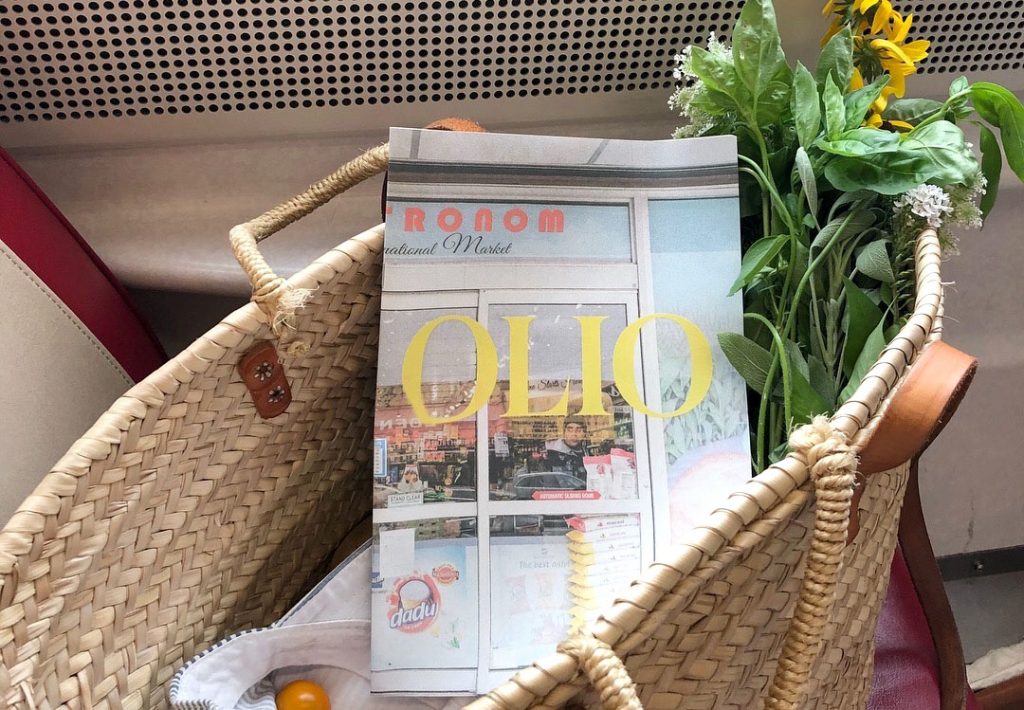
The idea for Olio evolved over a coconut milk risotto ("full of spring peas!") shared between New York-based creatives and friends Elie Andersen and Ali Francis in April. After a summer spent cooking together, they're launching the supper club next month—Francis will host the first 10-person meal at her home in Brooklyn on 23 September.
After the meal, guests get to take home a digital mini newspaper also called Olio, filled with photography and stories focusing on the kind of food Andersen and Francis love: home-cooked romesco, diner pancakes and street cart hot dogs. The pair say putting it together was a bit like rummaging through the pantry for impromptu ingredients—a fun, informal rebuke to the kinds of polished food magazines normally found on the newsstand.
Below, Andersen and Francis chat about the process of making Olio, which they describe as "a mish-mosh, not a magazine," and share the best things they ate along the way.
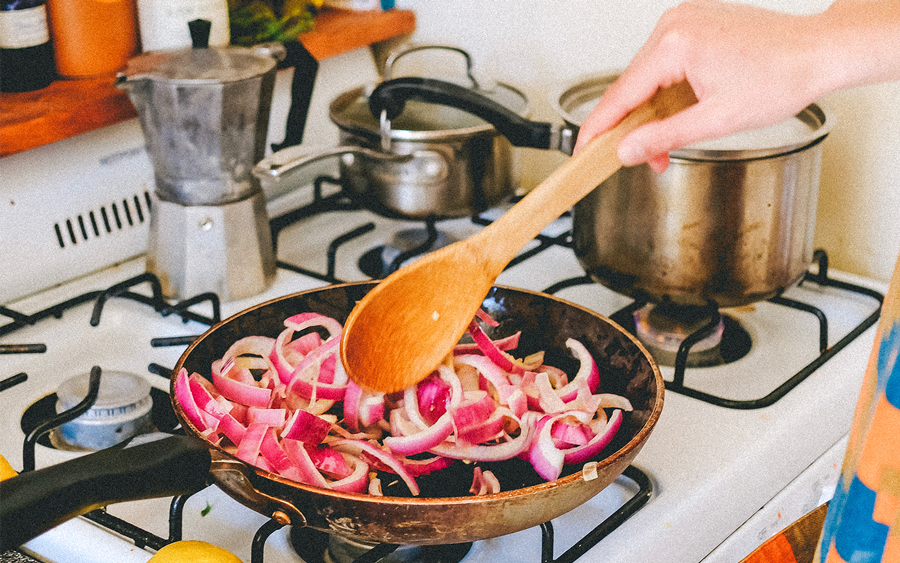
ANDERSEN: Olio is a monthly meal and a quarterly zine. We’re hoping it will also become a title under which we can produce events or the food components of events, and in that way collaborate with our community.
FRANCIS: We say quarterly, but it’s not really. We initially thought it would be, then said to each other: “Der, that’s kind of redundant. Let’s just make it beautiful and fascinating and when we run out of copies we’ll make a new one.” The meals are monthly for now, but we’re hoping to add amazing cooking classes by grandmas, breakfasts for dinner at our favorite diners, and BIG, BIG picnics for huge groups.
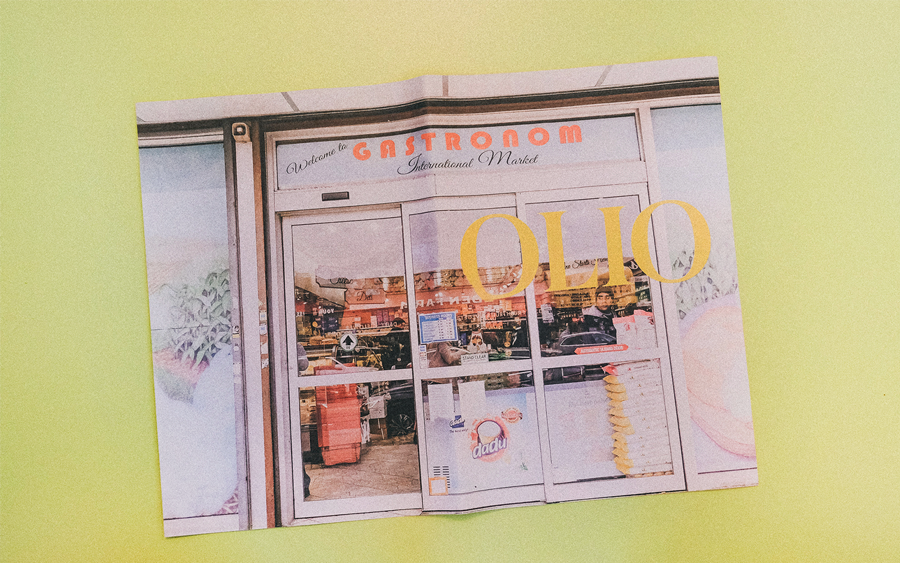
FRANCIS: Olio means “a miscellaneous collection of things”—which is exactly what Olio feels like to us. It also kinda sounds like olive oil which we’re almost 100% certain makes literally any food better. It’s sort of a classy word for what is a rather haphazardly beautiful process of creation. (Not going to lie, the fact that our names are Elie and Ali and we called it Olio is not not on purpose.)
ANDERSEN: When we’re putting together Olio, there’s nothing that doesn’t belong in the publication. It’s a mish-mosh, not a magazine; a smoothie, not a soufflé.
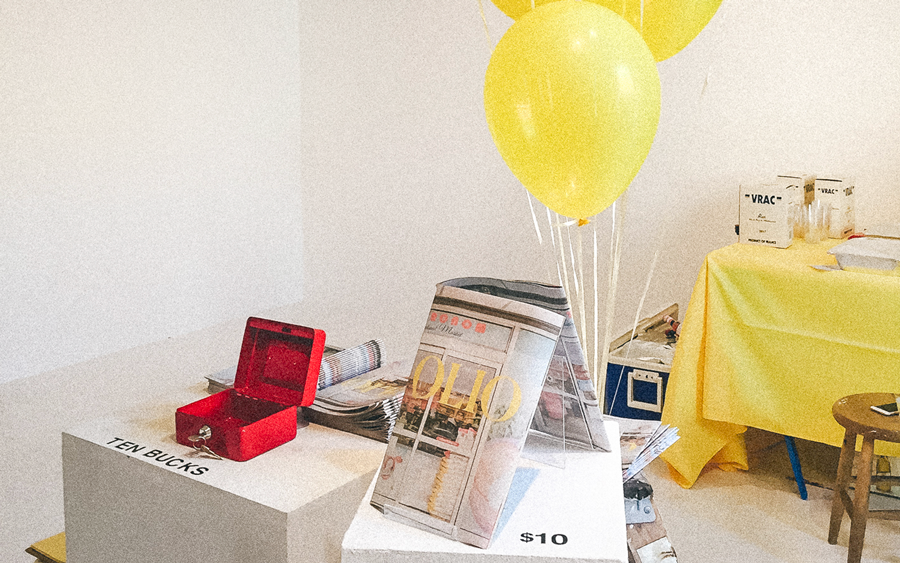
ANDERSEN: We’re really inspired by the “undesigned,” default visual character of the eateries we visit. Olio’s voice, both literarily and visually, seeks to be as sincere as the menu at the halal cart on the corner. As many of the spots we feature are owned and operated by immigrants and people from all sorts of different ethnic backgrounds, it’s important to us that the tone we use is curious and frank, rather than reductive or patronizing.
Since the folding of much print media into the digital space, it seems like the only printed lifestyle publications to survive have been the Kinfolks and the Luncheons: precious and a bit stark, representing refined and highly curated meals and selling for a high price point. Olio is a rejection of both print and food as spaces for the elite and exclusive. That’s also a big reason why we chose to print on newsprint—it feels accessible and egalitarian. Everybody knows what to do with a newspaper.
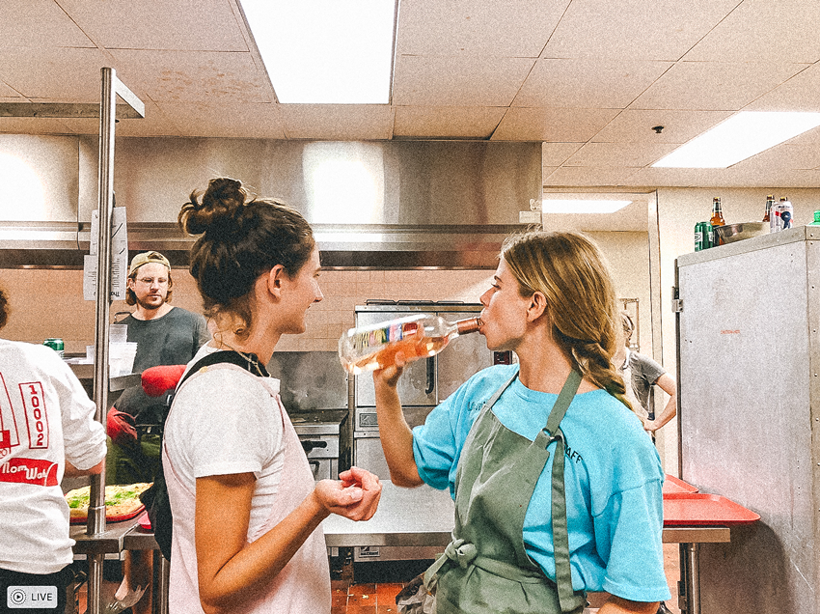
FRANCIS: Yeah, exactly what Elie said. Olio is about real food. Real, not in the sense that it’s kale as kale “ought to be,” but real in that it is true to itself. It is alive in the same way a lovingly stoked campfire, licking at a bunch of dangling marshmallows, is more alive than a pile of burning logs.
Our recipes are a bit hard to describe. Not because of their complexity but because we don’t have words to really communicate how simple they are. Olio recipes are not precise but their innateness is. The eateries we feature are good. In one spot this goodness might come from a flickering, dim-lit room with stone walls like a Greek taverna. In others, it’s fluorescent bulbs with big white tubs of by-the-pound olives. You could call Olio eateries charming, perhaps. All of this is to say that maybe the English language is too vague to define exactly what Olio is—but we know it when we feel it.
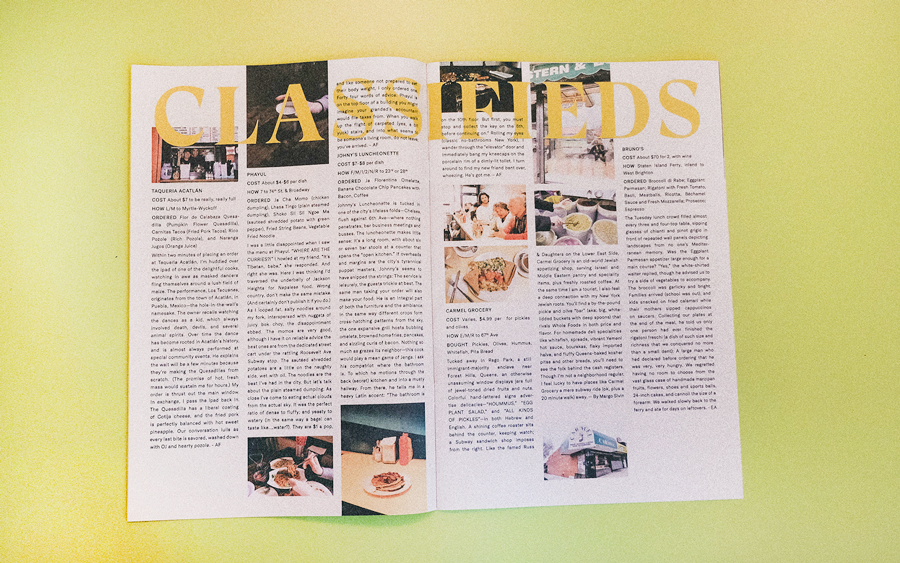
ANDERSEN: Olio is just the two co-founders, Ali Francis and Elie Andersen. Ali leads content creation, so she takes all the photos and does the majority of the writing. Elie is the designer.
From the beginning, the mentality of Olio has been “f*** it, ship it.” It’s a space where we don’t need to make multiple iterations, please multiple stakeholders, and spend months poring over word choice, layout options, and typographic hierarchies. Olio uses only two fonts, both designed by the formidable Grilli Type.
We use the metaphor of cooking with the contents of your pantry a lot: We see the limiting of our creative palette in a similar way to cooking with the staples you have on hand: open up the cabinet and use what you’ve got.
FRANCIS: Elie and I have almost shared a brain/heart/soul for the last few months, or so it’s seemed. I think part of Olio’s charm is that we trust each other 100% to do our bits. There’s no micromanaging or “um, wait, what is your strategy?” It’s all feel, guided by our shared vision.
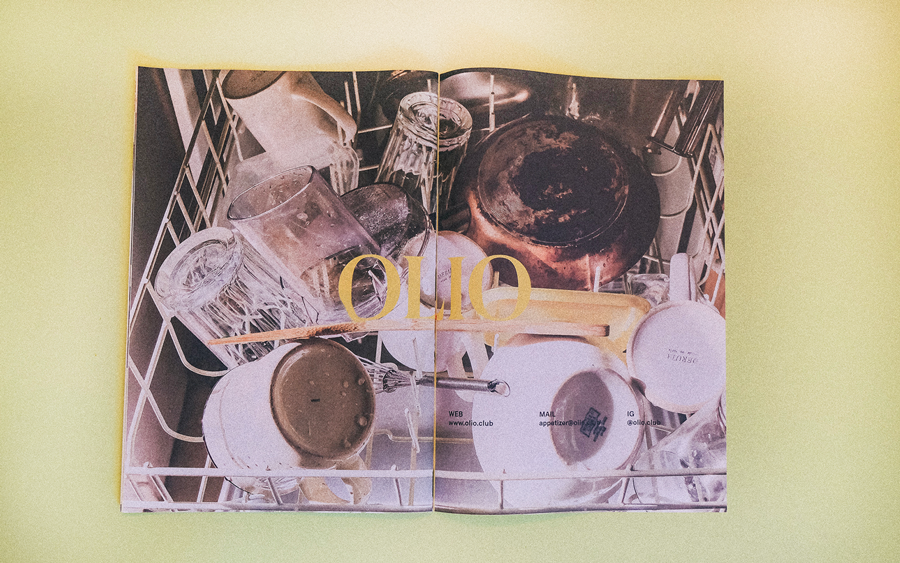
ANDERSEN: Everything about Olio deals in the realm of the tangible. Print and food have so much in common to us: both are sensory, both require your hands, both smell good, both are hard to ignore.
Not only that, Olio’s distribution model is built into it being a physical zine. We open our homes once a month for a public meal, which is comprised of a few big, fun, dishes and plenty of wine, and when it’s time to go, each guest leaves with a copy of the zine. We like that it serves as residue for the night—a tangible memory of the shared experience. Olio meals are $50 per person, and open once a month to the first ten guests who sign up.
FRANCIS: Again, what Elie says, but also like, so much of both of our “for money” creative work is purely for the internet these days. I felt like I needed to make something that felt purely me and I could touch and feel and show my mom and dad.
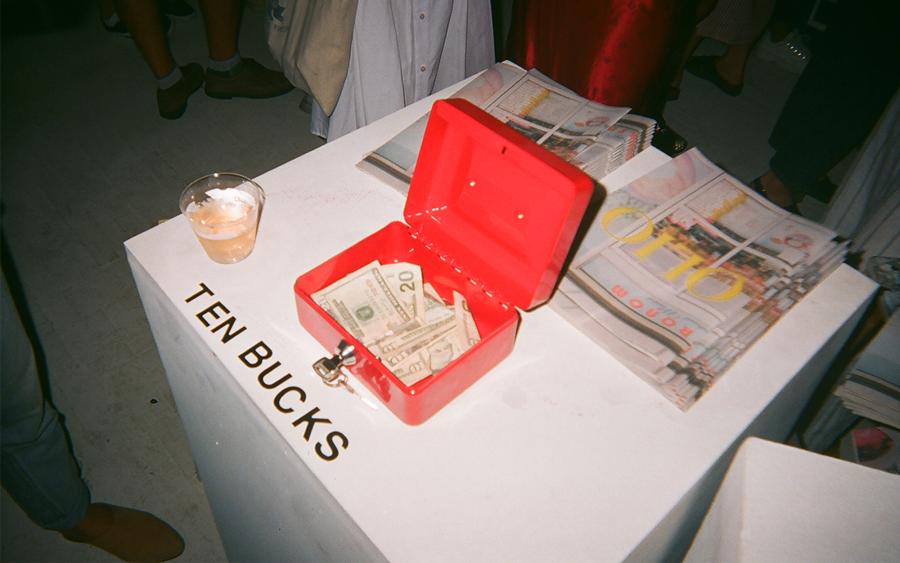
ANDERSEN: Olio is distributed at a series of monthly meals.
FRANCIS: And at special events! Like the recent Likeminds Camp, where we cooked for 260 people in upstate NY. That was the most incredible feast we’ve made so far!
ANDERSEN: Yes, by far the most mouths we’ve ever fed! We had such a good time sourcing food from nearby farms and purveyors we love — since this isn’t our job we’re very much in a place of wonder about the whole process. Throughout the weekend there were many exclamations of, “THAT’S what 60 pounds of onions feels like?!” and “Did you TASTE that freaking chimichurri?!” It’s so cool to be pushing our own limits creatively with food. It keeps me feeling really humble and like there’s so much to keep learning and growing from.
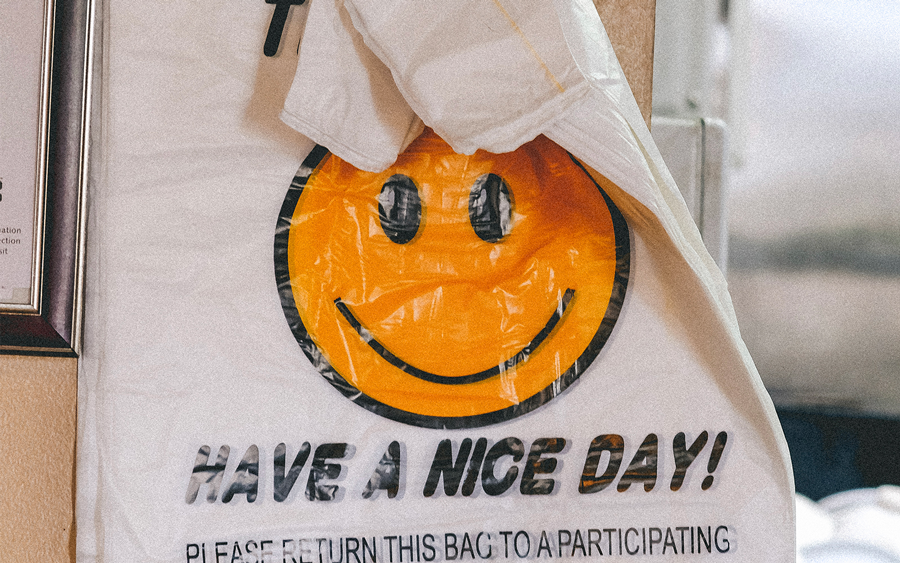
ANDERSEN: Ligaya Mishan’s food writing for the The New York Times, which champions the hole-in-the-wall and sets the bar for outer-borough exploration; Lucky Peach for its irreverence and iconoclasm; and Tamar Adler, whose book An Everlasting Meal is a major inspiration in setting the tone of Olio, as is the photography of Stephen Shore.
FRANCIS: I’ll never stop devouring the “Tables for Two” column in The New Yorker. How To Cook a Wolf, and of COURSE, William Eggleston, are classic forever muses for me. And RIP Lucky Peach.
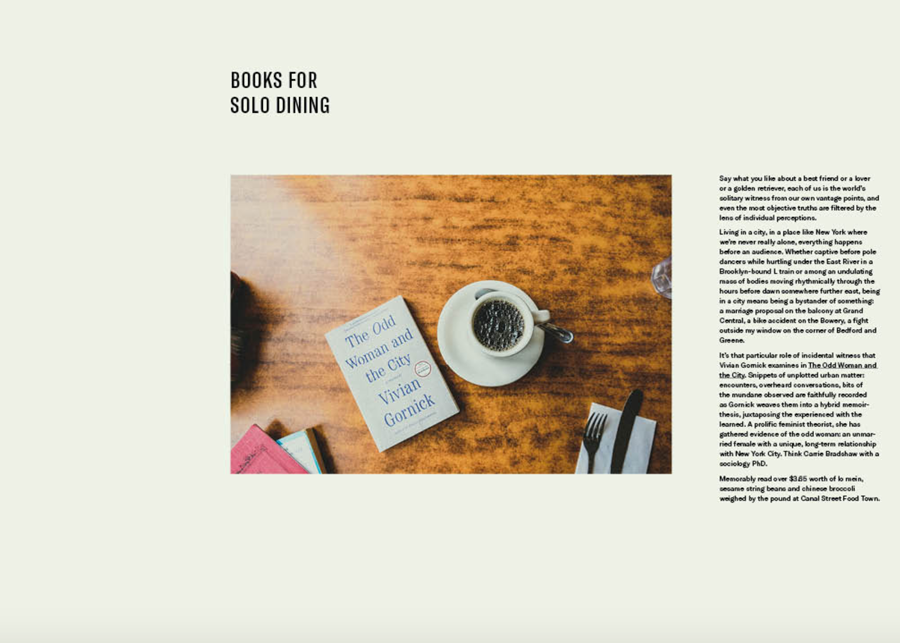
ANDERSEN: For now, yes! Olio is the stew of anything we feel like throwing into it, so as long as we keep being inspired by our regular sections (Books for Solo Dining, Classifieds, Fridge Portraits), we’ll keep them going!
FRANCIS: My favorite things to do in the whole world is read alone, preferably in a foreign cafe. It’s how I explore, unwind, and experience cultures as, not a local, but an undercover tourist, I guess. Sipping Moroccan mint tea and noshing on vegetable tagine is next on my bucket list—likely with some cocktail of femme fiction, self-help, and esoteric art book.
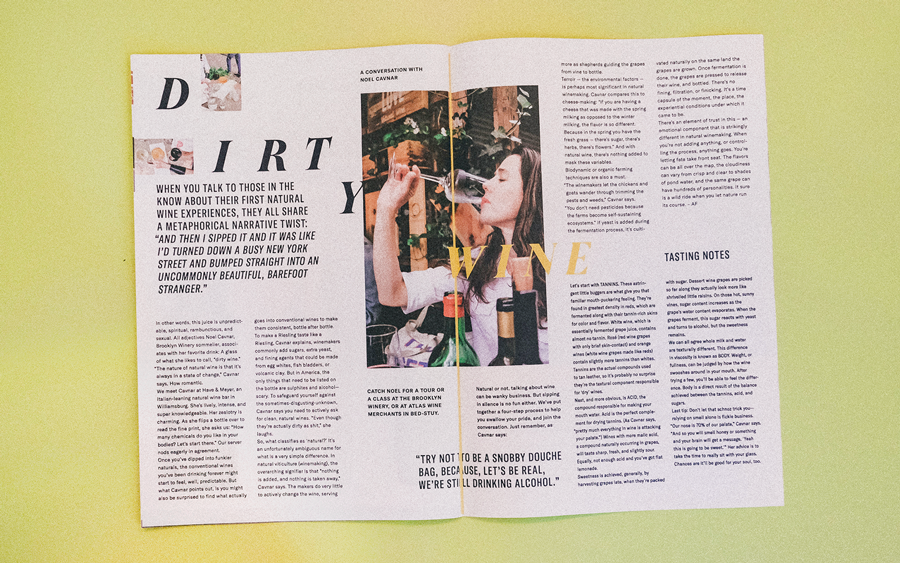
ANDERSEN: Eggplant Parm at Bruno’s on Staten Island. An appetizer portion big enough to eat for days on leftovers.
FRANCIS: Oh god. It’s a toss-up. Maybe the steamed buns out at Phayul in Jackson Heights. Followed SUPER closely by Elie’s spring risotto. (Coconut milk as the base—so, so good.)
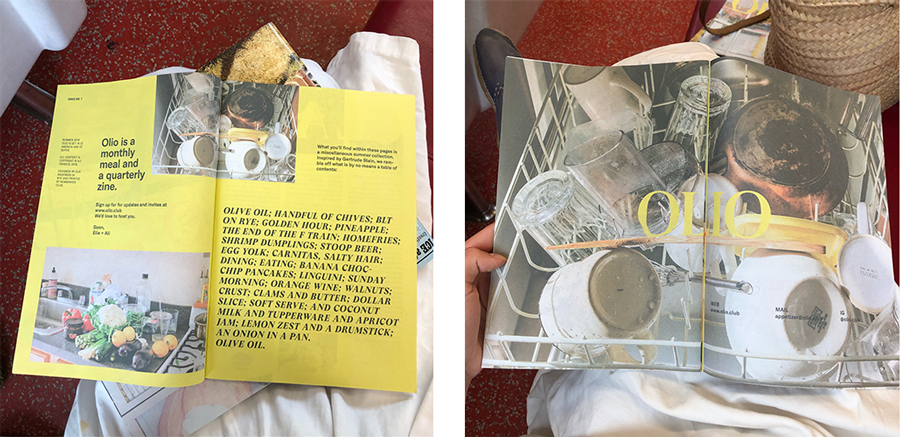
FRANCIS: I’ve learned that people can feel honesty in creation. Olio’s probably the realest thing I’ve ever made, and it’s also the thing that has seemed to resonate the most.
I also learned that orange wine is actually just white wine made like a red. And that for someone who “doesn’t have a sweet tooth,” I really love diner pancakes (shoutout to Johnny’s Luncheonette for the conversion!)
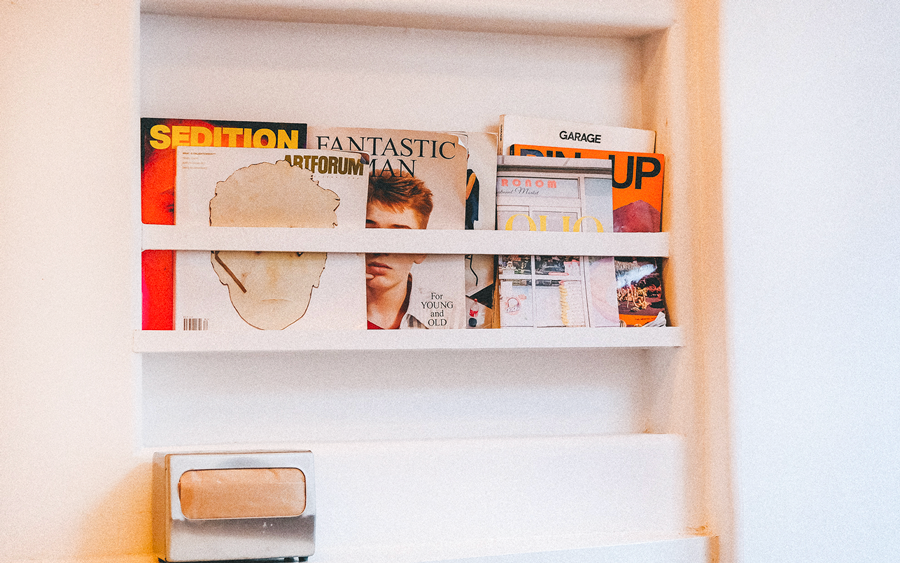
FRANCIS: Honestly, it’s been sooooooo freaky for us. Elie said to me the other day, after we were trawling through inbox messages from, oddly, around the world: “I’ve never made anything anyone cared about before.” And yeah, I feel the same. Maybe it’s because it’s this honest projection of things we care about, in a way that’s warm and welcoming? I don’t know, but people seem to be picking up what we’re putting down.
ANDERSEN: Plans include cooking classes with nonni (not just Italian, but ethnic grandmothers of the world); collaborative and performative dinner parties in unusual locations; girls night out (complete with leopard outfits and faux perms) at one of the iconic mafia restaurants of NYC; a portrait series of deli sandwiches. And, maybe someday, a place upstate where Olio is always happening: a cross between a residency, an event space, a hospitality experience, a learning annex and a farm.
FRANCIS: And breakfast for dinner pancakes/omelettes vibe at diners! And mass picnics! And yeah!
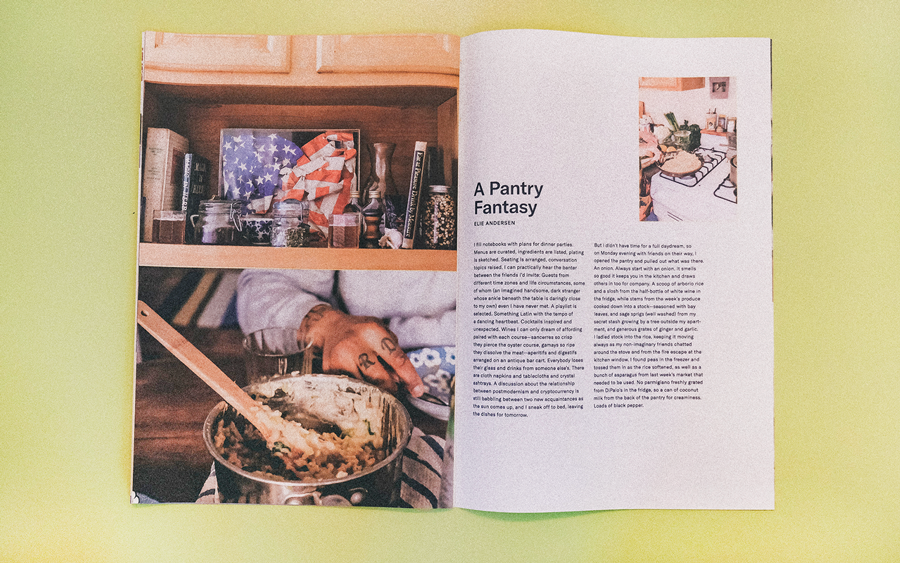
ANDERSEN: There’s a place called the Putnam Triangle, where Putnam Ave intersects with Fulton Street in Brooklyn, between Grand Ave and Cambridge Place.
The street is lined with a bodega, a Chinese takeout spot and a huge 24-hour laundry. There are tables set out for the public, and usually there’s someone with a huge speaker set blasting Hot 97. Old guys drink forties and exchange Newports. It’s my favorite spot to sit with the Sunday Times because it’s one of the only places you can sit outside at a table without being a patron: it’s true public space in a city where that’s becoming rare.
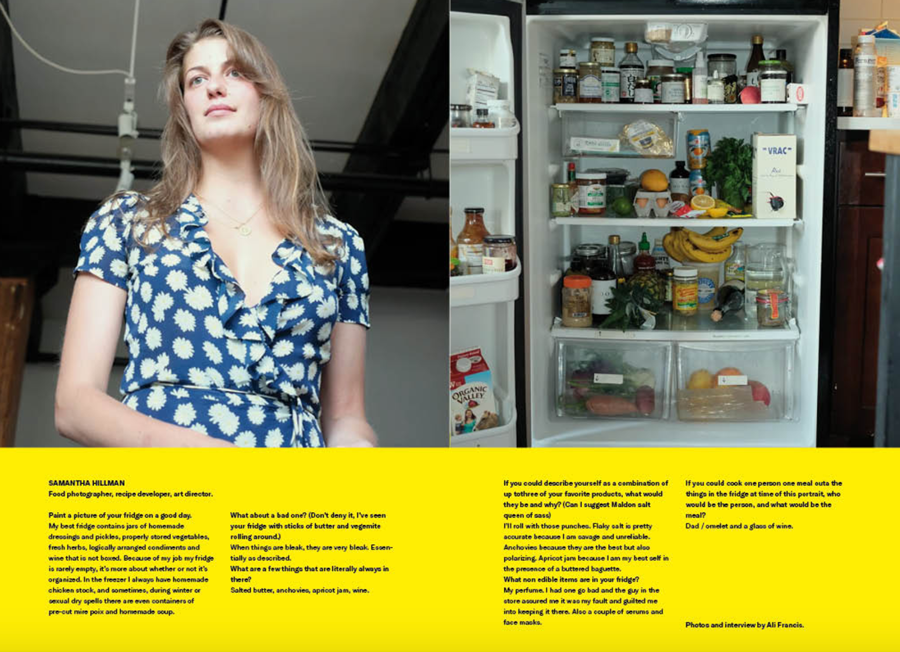
FRANCIS: Honestly? My fire escape in either of these scenarios: 1) Right after waking Sunday morning in my kimono with a buttery coffee. 2) Sunset on a summer evening with a glass of lambrusco and a fat hunk of cheese.
My place is in Crown Heights, and even though I live alone, I rarely feel alone. So this place, with one of those free local papers, is as good as it gets for me.
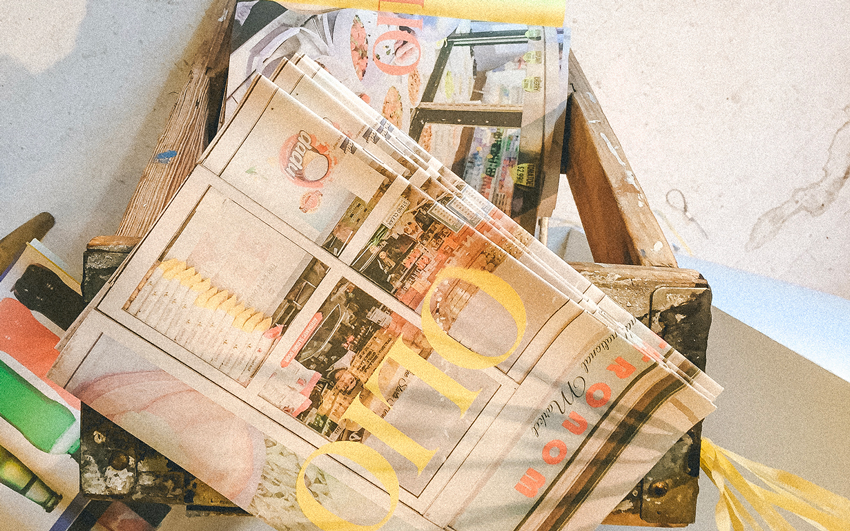
Ready to cook up your own newspaper? 🍳 Get started with free samples.
The first issue of Deluxe was, in Rupert Morrison’s words, “lumpy.” He’s the owner of Drift, an award-winning record shop in Totnes – not...
Spring is in the air and a new season of print is upon us! In this roundup, we've got a creative pick-me-up from Papier, a peek behind...
As Newspaper Club’s digital product manager, Billy Whitehouse spends his days helping others bring their print ideas to life. But...